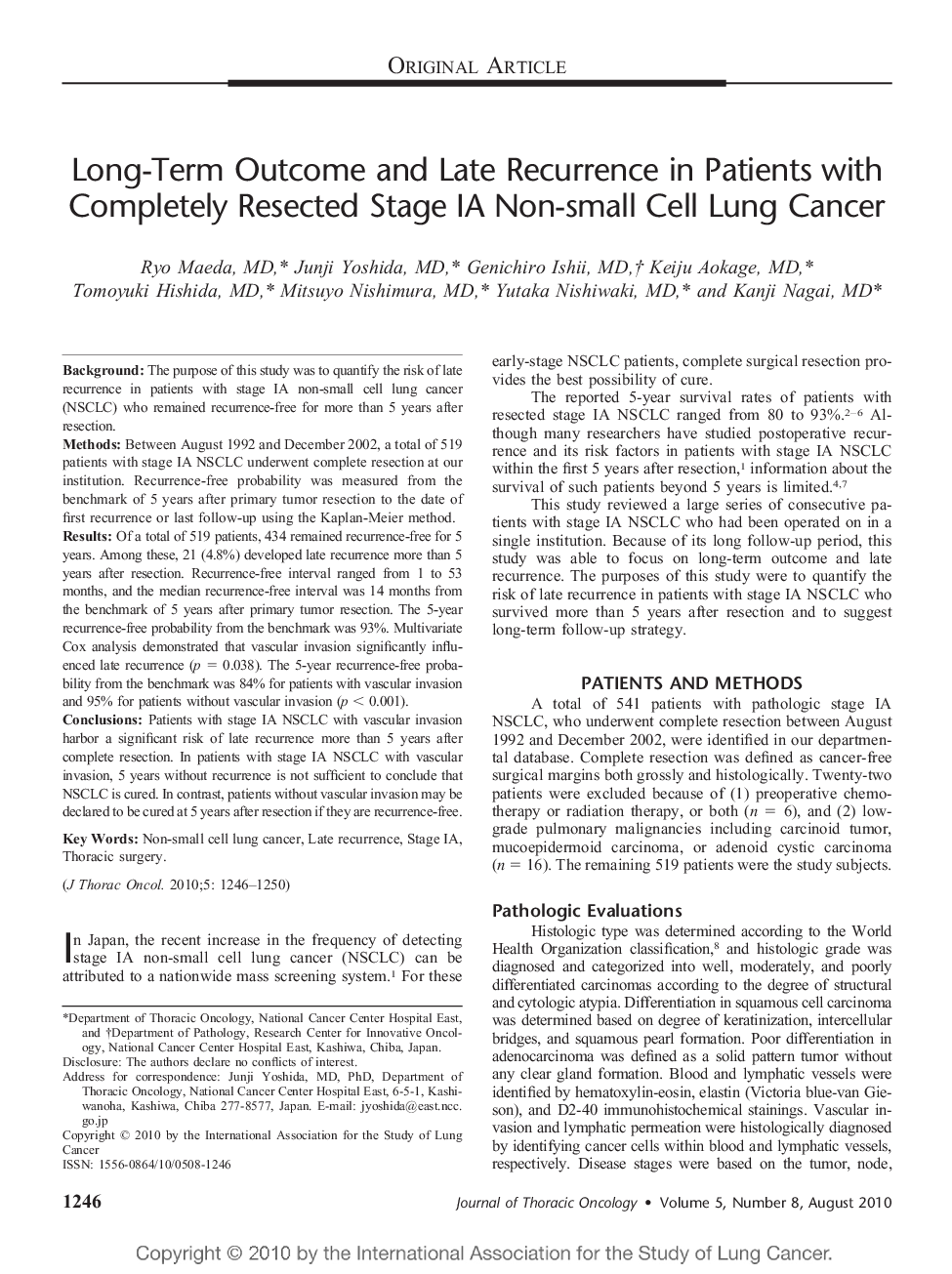| Article ID | Journal | Published Year | Pages | File Type |
|---|---|---|---|---|
| 3991827 | Journal of Thoracic Oncology | 2010 | 5 Pages |
BackgroundThe purpose of this study was to quantify the risk of late recurrence in patients with stage IA non-small cell lung cancer (NSCLC) who remained recurrence-free for more than 5 years after resection.MethodsBetween August 1992 and December 2002, a total of 519 patients with stage IA NSCLC underwent complete resection at our institution. Recurrence-free probability was measured from the benchmark of 5 years after primary tumor resection to the date of first recurrence or last follow-up using the Kaplan-Meier method.ResultsOf a total of 519 patients, 434 remained recurrence-free for 5 years. Among these, 21 (4.8%) developed late recurrence more than 5 years after resection. Recurrence-free interval ranged from 1 to 53 months, and the median recurrence-free interval was 14 months from the benchmark of 5 years after primary tumor resection. The 5-year recurrence-free probability from the benchmark was 93%. Multivariate Cox analysis demonstrated that vascular invasion significantly influenced late recurrence (p = 0.038). The 5-year recurrence-free probability from the benchmark was 84% for patients with vascular invasion and 95% for patients without vascular invasion (p < 0.001).ConclusionsPatients with stage IA NSCLC with vascular invasion harbor a significant risk of late recurrence more than 5 years after complete resection. In patients with stage IA NSCLC with vascular invasion, 5 years without recurrence is not sufficient to conclude that NSCLC is cured. In contrast, patients without vascular invasion may be declared to be cured at 5 years after resection if they are recurrence-free.
